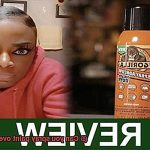Are you tired of your old carpet but don’t want to go through the hassle of ripping it up? Painting over old carpet glue might just be the solution you’ve been looking for. It’s a cost-effective and time-saving way to give your interiors a fresh new look without breaking the bank.
But can you really paint over old carpet glue? The answer is a resounding yes. However, before you start this project, it’s important to know what you’re getting yourself into. You need to consider factors such as the type of paint you’ll use, how to prep the surface properly, and what materials are required for a successful outcome.
In this blog post, we’ll explore all the tips, tricks, and techniques necessary for painting over old carpet glue. We’ll delve into the benefits of this technique while also highlighting any potential pitfalls that may arise. By the end of this post, you’ll have a comprehensive understanding of what it takes to transform your space with just a can of paint and some determination.
So let’s dive in and discover how easy it is to breathe new life into your room with this innovative trend.
Is It Safe to Paint Over Old Carpet Glue?
Contents
- 1 Is It Safe to Paint Over Old Carpet Glue?
- 2 Preparing the Surface for Painting
- 3 What Type of Paint Should You Use?
- 4 Tips for Painting Over Old Carpet Glue Successfully
- 5 How to Test for Asbestos in Carpet Glue
- 6 Pros and Cons of Painting Over Old Carpet Glue
- 7 Alternatives to Painting Over Old Carpet Glue
- 8 Common Mistakes When Painting Over Old Carpet Glue
- 9 Conclusion
Painting over old carpet glue can be a tricky task, and safety should always be a top priority. The type of adhesive used is a crucial factor to consider before attempting to paint over it. Some adhesives may contain hazardous chemicals that can pose a risk when disturbed, so identifying the type of adhesive used is essential. Asbestos fibers were commonly used in carpet glues before 1984, and it’s important to have the glue tested by a professional before beginning any work.
Assuming the old carpet glue is safe to work with, it’s important to assess its condition. If it’s firmly adhered to the surface and hasn’t deteriorated or become brittle over time, painting over it may be safe. However, if the old carpet glue is loose or deteriorating, painting over it may not be advisable as it could lead to further damage or flaking.
Proper preparation of the surface is crucial before attempting to paint over old carpet glue. This includes removing any loose or flaking glue and cleaning the surface thoroughly with a degreaser and water. Once the surface has dried completely, a coat of primer specifically designed for use on adhesive surfaces should be applied.
Choosing the right type of paint is also an important consideration. Not all paints are suitable for use on adhesive surfaces, and some may not adhere properly or may react negatively with the glue. For best results, it’s generally recommended to use an oil-based or epoxy-based paint.
It’s important to note that painting over old carpet glue may affect the adhesion of the paint. Residual adhesive can cause paint not to adhere properly, resulting in peeling or flaking. Therefore, taking your time during the application process and allowing ample time for drying is crucial.
Preparing the Surface for Painting
To achieve a high-quality finish, it’s essential to prepare the surface thoroughly. Here, we’ll walk you through the crucial steps for preparing a surface before painting over old carpet glue.
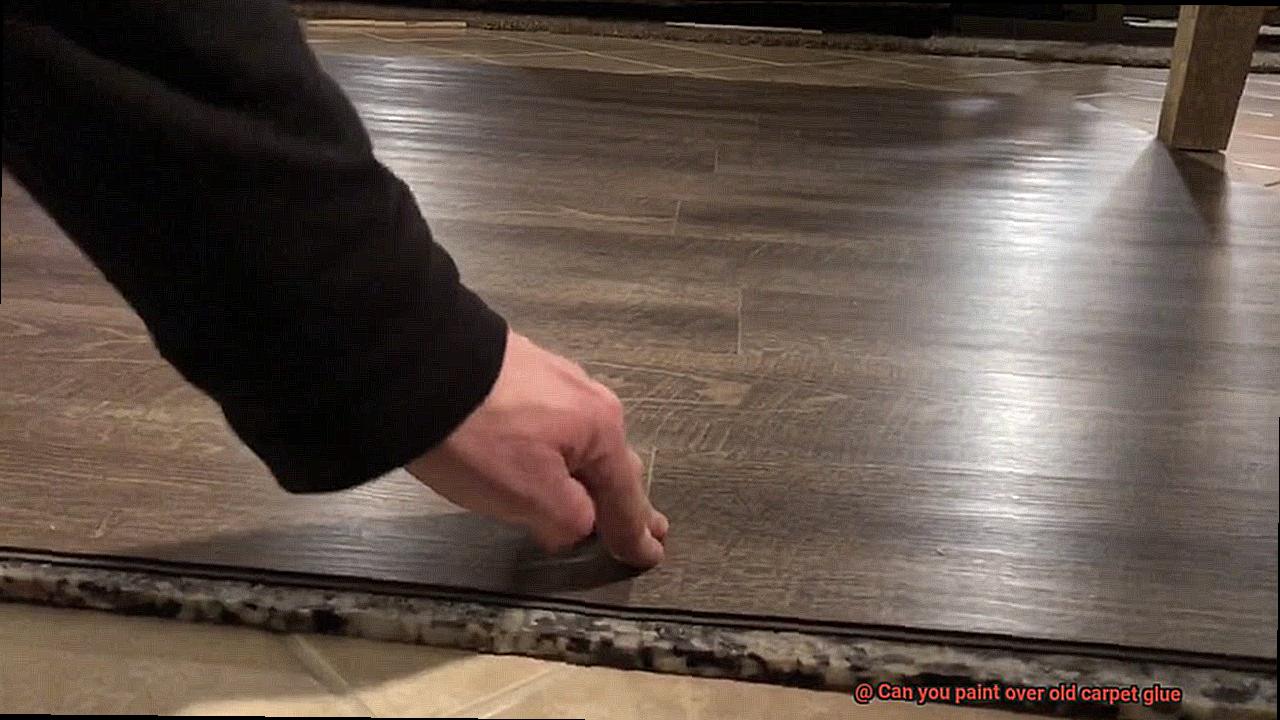
Step 1: Remove Loose Residue
The first step is to eliminate any loose or flaky glue residue from the surface. Using a scraper or sandpaper can do this. However, if the residue proves stubborn, a chemical adhesive remover may be necessary. Always wear protective gloves and masks when working with chemicals.
Step 2: Clean the Surface
Once all loose residue has been removed, it’s time to clean the surface thoroughly. A mixture of warm water and mild detergent is ideal for cleaning. Rinse it with clean water and allow it to dry completely before proceeding.
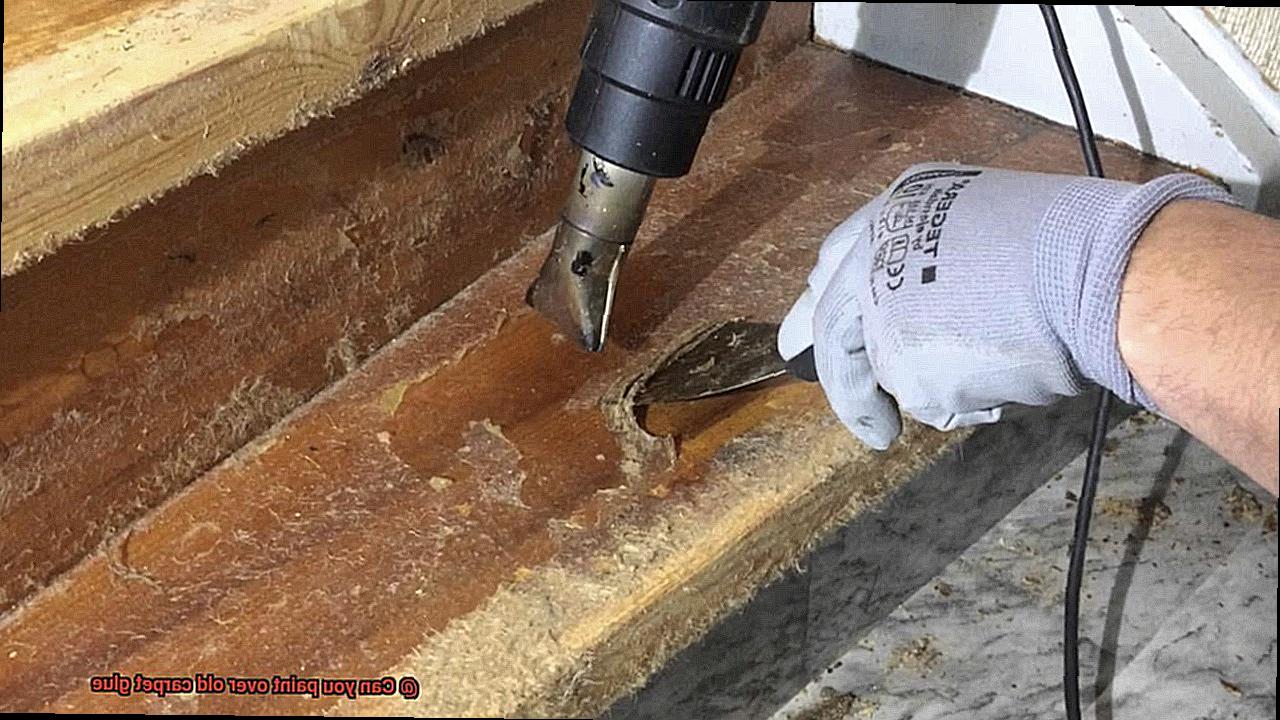
Step 3: Lightly Sand the Surface
Next, you’ll need to lightly sand the surface using fine-grit sandpaper. Sanding will remove any remaining glue residue and roughen up the surface for better grip of the paint. Make sure to dust off any debris using a clean cloth.
Step 4: Apply Primer
After cleaning and sanding, it’s time to apply a primer. A good quality primer will help seal any remaining glue residue and provide a smooth base for the paint. Follow the manufacturer’s instructions when applying the primer and allow it to dry fully before proceeding.
What Type of Paint Should You Use?
Choosing the right type of paint can make all the difference in creating a beautiful and long-lasting finish. As an expert in the field, I have researched and compiled a list of the best types of paint to use when painting over old carpet glue.
If you’re looking for durability, oil-based paint is an excellent choice. It provides a tough and long-lasting finish that resists chipping, peeling, and fading. But beware, oil-based paint emits strong fumes and requires solvents for cleanup.
For areas with heavy foot traffic or exposure to moisture, epoxy paint is a great option. This two-part system consists of a resin and hardener, creating a thick and protective coating that is resistant to chemicals, stains, and abrasion.
If you prefer a water-based option that’s environmentally friendly, latex paint is perfect. It dries quickly, is easy to apply, and has low VOC emissions. While not as durable as oil-based or epoxy paint, it can still provide good coverage and adhesion when applied properly.
For a unique and decorative look, consider concrete stain. It penetrates the surface of the concrete and creates a permanent color that won’t peel or fade over time. Concrete stain also allows the natural texture of the concrete to show through.
Tips for Painting Over Old Carpet Glue Successfully
It’s time to give them a fresh new look with a coat of paint. But before you get started, there are a few important steps to take to ensure a successful outcome.
Prep the surface
The first step in painting over old carpet glue is proper preparation. Use a scraper or sandpaper to remove any loose or flaking glue, and clean the surface with a degreaser or similar product. A clean surface is essential for good adhesion.
Apply a primer
Before you start painting, apply a primer specifically designed for use on adhesive surfaces. This will help the paint adhere properly and prevent any potential issues with peeling or flaking.
Choose the right paint
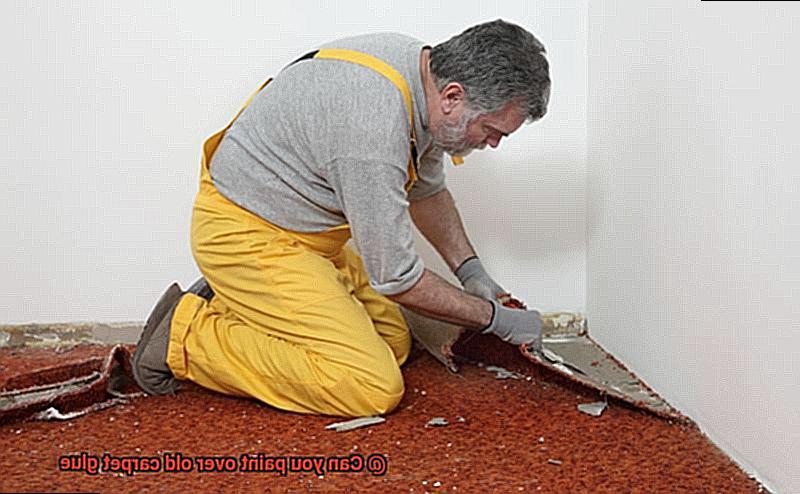
When choosing your paint, it’s important to select one that is compatible with the type of glue used. Oil-based or epoxy-based paints are usually recommended as they have better adhesion than water-based paints.
Ventilation is key
Because many adhesives can emit harmful fumes, proper ventilation is crucial when painting over old carpet glue. Make sure the area is well-ventilated and wear protective gear if necessary.
Apply multiple coats
To achieve an even finish, it’s important to apply multiple coats of paint. Allow each coat to dry completely before applying the next one.
Use a topcoat

Finally, apply a topcoat to protect the surface and give it a finished look. Choose a topcoat that is suitable for your paint type and apply it evenly using a brush or roller.
How to Test for Asbestos in Carpet Glue
Testing for asbestos in carpet glue is a crucial step before attempting to paint over it. Asbestos is a naturally occurring mineral fiber that can be harmful if inhaled and was commonly used in building materials, including carpet glue, until the 1970s when its health risks were discovered. Here are five sub-sections explaining the steps necessary to test for asbestos in carpet glue:
Hire a Professional Asbestos Testing Service
It is highly recommended to hire a professional asbestos testing service to take samples of the carpet glue and send them to a laboratory for analysis. These professionals have the proper equipment and training to handle potentially hazardous materials safely. They will take samples of the glue from an inconspicuous area where it is intact and undisturbed.
Do Not Disturb the Glue Before Sampling
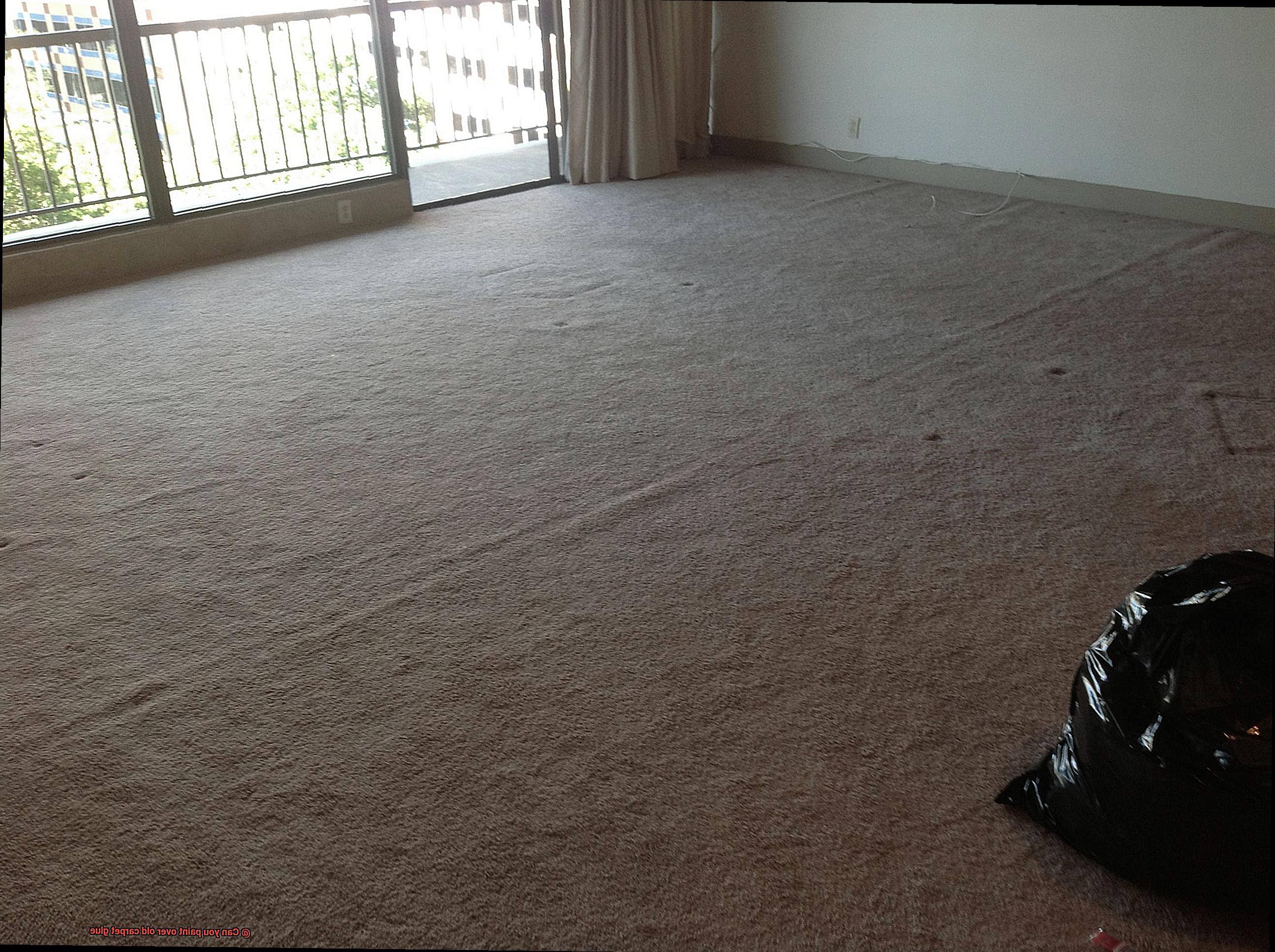
It is crucial not to disturb the carpet glue before sampling, as this could release asbestos fibers into the air and pose a health risk. Therefore, it is essential to wear a respirator, gloves, and protective clothing when collecting samples. Additionally, wetting the area with a spray bottle can minimize the release of fibers during sampling.
Hire a Professional Asbestos Abatement Service if Necessary
If asbestos is found in the carpet glue, it is best to hire a professional abatement service with experience in handling hazardous materials safely. Attempting to remove or paint over asbestos-containing materials without proper equipment and training can be dangerous and lead to health risks.
Remove Old Glue if Necessary
Even if no asbestos is present, removing any old carpet glue may be necessary before painting over it. This can be done using a scraper or sander. It is important to note that the surface should be clean and free of any debris or loose material before applying paint.
Prepare the Surface for Painting
After removing any old glue, make sure the surface is clean and free of debris before applying paint. This will ensure that the paint adheres properly and looks smooth. It is also important to follow proper safety procedures when handling potentially hazardous materials.
Pros and Cons of Painting Over Old Carpet Glue
Before you reach for a paintbrush, consider the pros and cons of painting over old carpet glue.
On the plus side, painting over old carpet glue can save you time and money compared to removing it altogether. Removing old glue can be a difficult and expensive process, often requiring specialized equipment and expertise. On the other hand, painting over the glue can provide a quick and easy fix, especially for those on a tight budget.
Another advantage is that it can create a unique and textured look that cannot be achieved with other flooring options. If the glue has an interesting pattern or texture, painting over it can enhance the design and add character to a space. You can even get creative with different colors and finishes to create a one-of-a-kind look.
However, there are potential downsides too. One major drawback is adhesion issues. The paint may not adhere properly to the glue, resulting in a patchy or uneven finish. This can be especially problematic in high-traffic areas or if furniture will be placed on top of it.
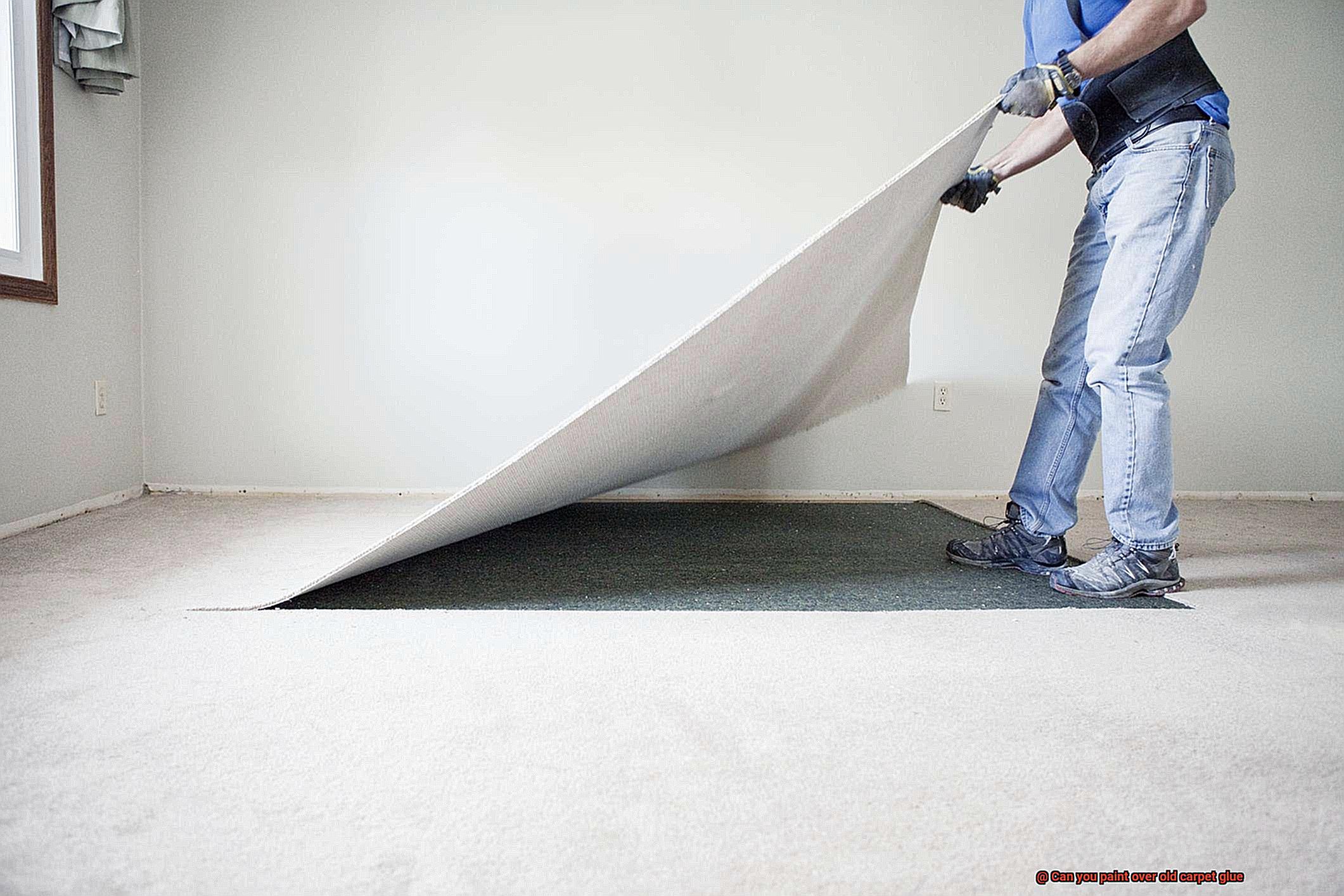
Another possible issue is durability concerns. Over time, the paint may start to chip or peel, exposing the underlying glue. This can create an even more unsightly appearance and may require further repairs or replacement.
Overall, while painting over old carpet glue may seem like an attractive solution, it is important to carefully consider both the pros and cons before proceeding. Investing in professional removal services or exploring alternative flooring options may be a more permanent and reliable solution in the long run.
Alternatives to Painting Over Old Carpet Glue
Don’t be tempted to take the easy way out by painting over it. While it may seem like a quick fix, it can lead to problems with adhesion and durability. But fear not, there are alternatives that might just be the solution you’ve been searching for.
First up, removing the carpet glue entirely is an option if it’s in good enough condition. Yes, it can be a time-consuming and labor-intensive process, but it will provide you with a clean surface for painting or installing new flooring options. However, if removing the glue isn’t possible, don’t despair. You can cover it up by installing new carpet, vinyl, tile, or hardwood flooring to give your space a fresh look.
If you’re determined to paint over the old carpet glue, using a high-quality primer is key. Look for products specifically designed for this purpose to ensure that your paint adheres properly and lasts for years to come.
And lastly, depending on the size and scope of your project, hiring a professional might be worth considering. They can assess the condition of the carpet glue and recommend the best course of action to take.
Common Mistakes When Painting Over Old Carpet Glue
While it may seem like an easy solution, there are some common mistakes that people make, leading to a subpar paint job that won’t last. Don’t let these mistakes ruin your project. Let’s explore the most common mistakes when painting over old carpet glue, and how to avoid them.
Mistake #1: Failing to Properly Clean the Surface Before Painting
Old carpet glue can be challenging to remove, but failing to clean it thoroughly can lead to adhesion issues. Any residue left behind can interfere with the paint’s ability to stick properly, resulting in peeling or flaking over time. Use a degreaser or solvent to ensure that all residue is removed before painting.
Mistake #2: Using the Wrong Type of Paint

Not all paints will adhere well to old carpet glue, which can cause damage to the flooring. It’s essential to use high-quality paint specifically designed for the surface you’re painting on to ensure a successful paint job that lasts.
Mistake #3: Not Allowing Enough Time for Glue to Dry
Patience is key when it comes to painting over old carpet glue. If the glue is still wet or tacky, it can interfere with proper adhesion of the paint, leading to damage over time. You must allow the glue to dry completely before painting, which may take several days.
Mistake #4: Not Properly Preparing the Surface Before Painting
Proper preparation ensures a smooth and even paint job that looks great and lasts longer. This includes filling in cracks or holes in the surface and sanding down rough spots or uneven areas. Failing to do so can result in a paint job that looks uneven or bumpy.
djV1byX10Os” >
Conclusion
In conclusion, painting over old carpet glue is a fantastic option for giving your interiors a fresh new look without the hassle of removing the old carpet. However, before embarking on this project, it’s crucial to consider several factors such as the type of adhesive used, its condition, and proper surface preparation.
Safety should always be a top priority when dealing with potentially hazardous materials like asbestos fibers that were commonly used in carpet glues before 198It’s essential to have the glue tested by a professional and use protective gear and proper ventilation when working with these materials.
While there are potential downsides to painting over old carpet glue such as adhesion issues and durability concerns, there are alternatives such as removing the glue or installing new flooring options. Carefully weighing both the pros and cons before proceeding with this project is essential.
To avoid common mistakes when painting over old carpet glue, ensure that you properly clean and prepare the surface beforehand. Use high-quality paint specifically designed for this purpose, allow ample time for drying, and fill in any cracks or holes in the surface.




